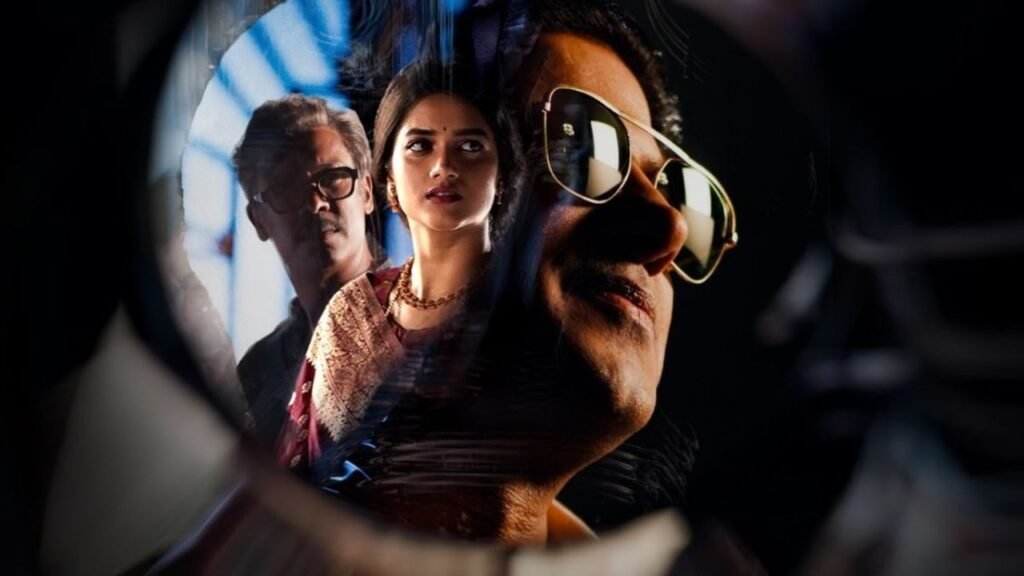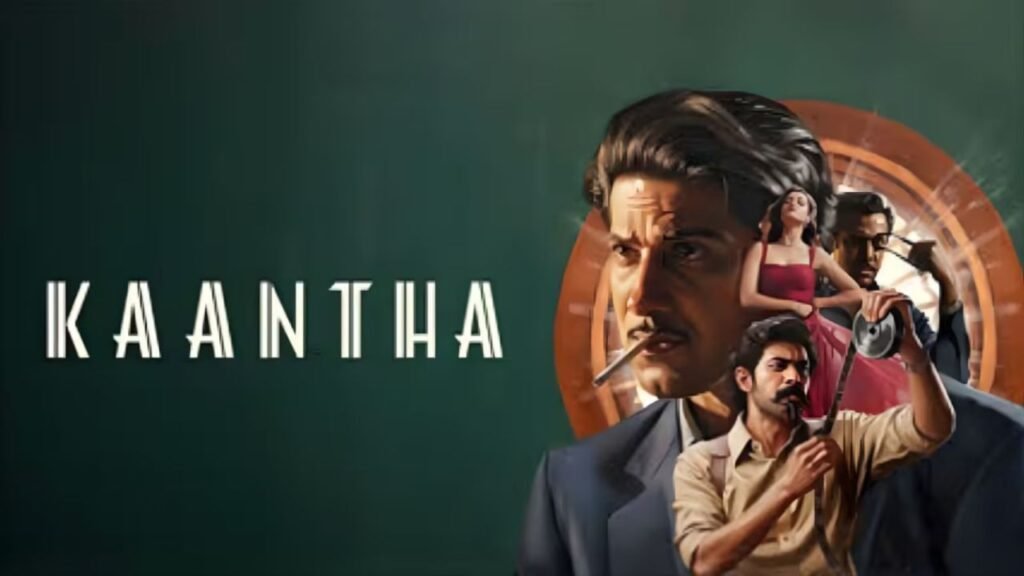Selvamani Selvaraj’s Kaantha is a richly crafted period drama that dives into the tense, ego-driven world of 1950s Indian cinema. Instead of presenting a nostalgic tribute, the film unpacks the fragile ambition, artistic hunger, and psychological turmoil that shape the lives of filmmakers. With stellar performances from Dulquer Salmaan, Bhagyashri Borse, Samuthirakani, and Rana Daggubati, Kaantha becomes a haunting portrait of artists consumed by their own creations.
Story: When Art Turns Into War
The film follows KT Mahadevan (Dulquer Salmaan), a rising matinee idol whose fame begins to outshine that of his revered mentor, Ayya (Samuthirakani). What begins as admiration slowly transforms into rivalry when Mahadevan takes over Ayya’s project Shaantha, renames it Kaantha, and reshapes it according to his own vision.
In the middle of this battle stands Kumari (Bhagyashri Borse), the film’s leading lady. Her personal and professional life becomes tangled in Mahadevan’s growing obsession — an obsession with art, power, and perhaps with her. As Mahadevan’s grip tightens, the film’s boundaries between performance and reality blur dangerously.
The constant tension raises unsettling questions:
Is Mahadevan driven by love, ambition, or a need to immortalize himself at any cost?
Selvaraj masterfully turns the film set into a psychological space where jealousy, manipulation, and insecurity silently wage war.
Themes: Ego, Ambition, and the Masks Artists Wear
Kaantha explores the intense emotional landscape that lies behind filmmaking, using the 1950s as a fertile backdrop. This was a defining era for Indian cinema — a time of reinvention, power shifts, and larger-than-life personalities. Selvaraj captures this beautifully, placing his characters at the crossroads of:
- Art vs. obsession
- Creative integrity vs. commercial ambition
- Mentorship turning into rivalry
- Love manipulated through ego
The film highlights how artists perform not only in front of the camera but also in their relationships, crafting identities as carefully as they craft scenes. Every interaction feels like a performance layered with insecurity, desire, and competition.

Direction: A Period Drama With Psychological Edge
Selvamani Selvaraj brings a unique tone to Kaantha — theatrical yet grounded, nostalgic yet tense. He avoids glamorizing the past; instead, he uses the era to heighten emotional conflict. His direction creates a claustrophobic atmosphere where every conversation feels like a showdown and every silence pulses with unspoken tension.
One of the film’s strongest achievements is how it keeps the audience constantly unsure of what’s authentic and what’s merely part of the “act.” This blurring of reality becomes central to the narrative’s psychological impact.
Technical Excellence: Visuals, Music, and Mood
Cinematography
Shreyaas Krishna’s cinematography stands out among the film’s strengths. Shot in a desaturated sepia palette, Kaantha visually transports viewers to the 1950s. Each frame resembles a vintage photograph — muted, elegant, and expressive.
The lighting and composition add emotional weight, often using shadows and minimalism to mirror the characters’ inner turmoil.
Music & Sound
Jakes Bejoy’s music enriches the narrative without overwhelming it. His background score intensifies dramatic scenes and subtly guides viewers through emotional shifts. The sound design enhances the psychological layers of the story.
Performances: Dulquer Salmaan Steals the Frame
Dulquer Salmaan as KT Mahadevan
Dulquer delivers one of his most complex performances. He presents Mahadevan as a man overflowing with confidence yet riddled with insecurity. His gradual descent into obsession — for control, legacy, and Kumari — is portrayed with remarkable nuance. Dulquer switches between charm, fragility, and menace effortlessly.
Bhagyashri Borse as Kumari
Bhagyashri brings poise, vulnerability, and understated strength to Kumari. She plays her not as a helpless woman caught between two men, but as someone fighting to maintain autonomy in a world constantly trying to shape her. Her performance adds emotional grounding to the film.
Samuthirakani as Ayya
Samuthirakani is exceptional as the disappointed mentor whose pride and affection struggle for dominance. His restrained approach adds moral weight to the story, making the mentor-disciple dynamic one of the film’s emotional highlights.
Rana Daggubati as Inspector Devaraj
Rana injects the film with a burst of energy in the final act. His theatrical, commanding presence raises the stakes, pushing the story towards a dramatic conclusion.
Verdict: A Haunting, Beautifully Crafted Journey Into Artistic Madness
Kaantha is a visually striking, emotionally rich, and psychologically layered film that examines the cost of artistic obsession. Supported by standout performances — especially from Dulquer Salmaan — and guided by Selvamani Selvaraj’s confident direction, it becomes one of the most compelling stories set behind the scenes of Indian cinema.
Haunting, bold, and beautifully crafted, Kaantha stays with you long after its final frame — much like the very art it questions.






















